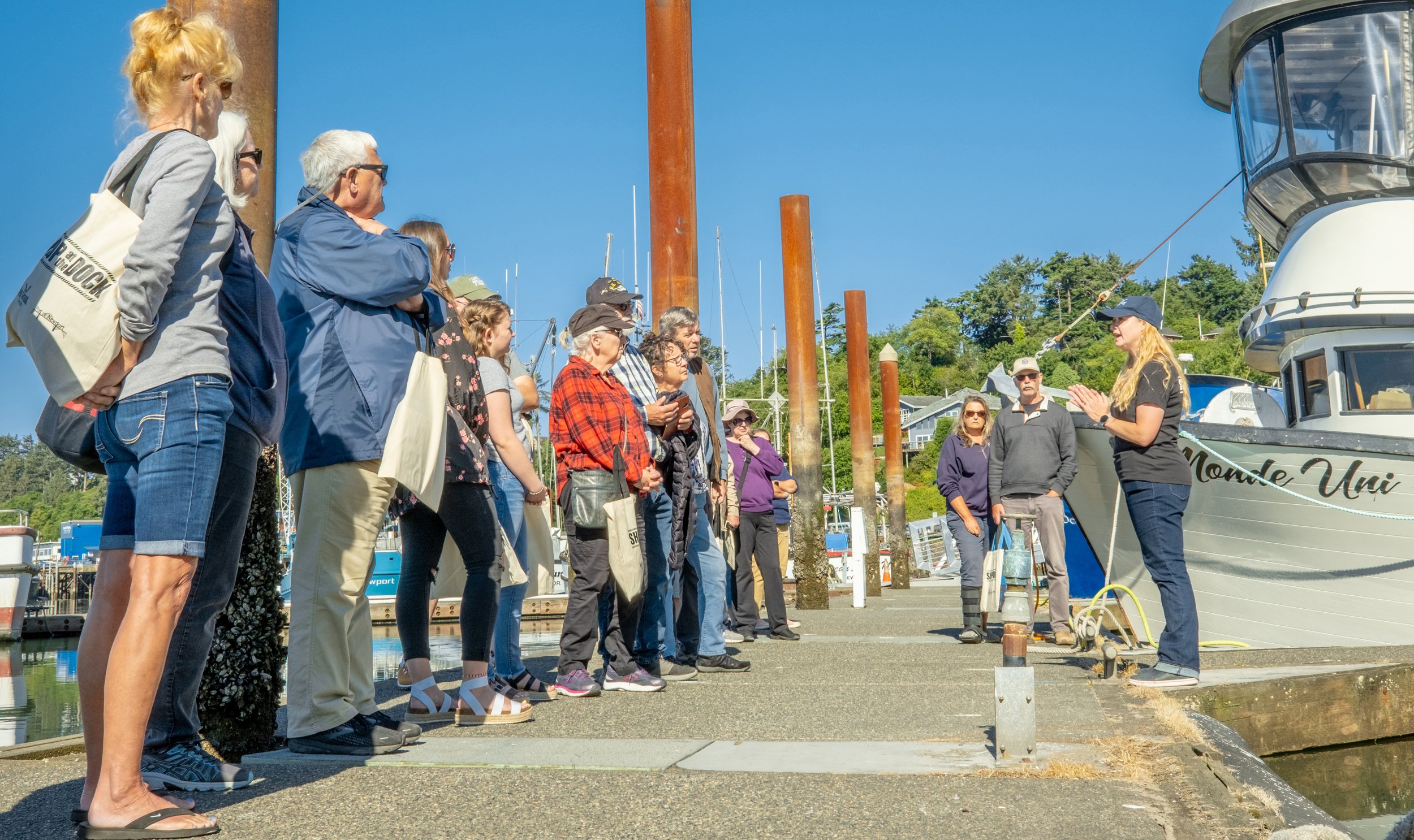Give it a try, just for the halibut
Get fresh with Newport fishers during Shop at the Dock






By Barbara B. Covell
For the TODAY
It is one of the bountiful legacies of our coastal community. Crab, salmon, tuna, shrimp and calamari — freshly harvested from the great Pacific Ocean. The mysteries of these divergent food sources are revealed in Oregon State University’s Sea Grant program. Dubbed Shop the Dock, this program educates residents and visitors about the diverse coastal fisheries and how to purchase fresh seafood locally.
Under the leadership of Angee Doerr, PhD, the program features a guided tour through Port Dock 5 on Newport’s Bayfront. The tour includes first hand exposure to the variety of fishing boats docked in the port.
“People don’t really know the different kinds of boats, their gear, what they catch and how,” Doerr said. “We try to cover all the major fisheries and promote the fantastic seafood here in Oregon.”
Now in its 10th year, Doerr credits the Port of Newport for their sponsorship in making this program a success.
The tours are held at 9:30, 10 and 10:30 am every Friday until Aug. 19, typically last from 60 to 90 minutes and are on a first-come, first-served basis. Doerr says the Port Dock 5 walking tour gives people exposure to many different kinds of boats, their gear and the seafood caught.
“It is a fun, family-friendly, free outdoor experience,” she said. “We have many people who come back.”
Each stop on the tour features a different method for catching fish or the targeted species.
“Longlining vessels use long lines, or main lines, with baited hooks attached at intervals,” Doerr said. “They target halibut and black cod, also called sablefish.”
Longliners must balance their soak time (how long the line is in the water) with the type of bait and location in the water. They are prone to bycatch, the incidental catching of non-targeted fish and seabirds. By working with Oregon Sea Grant and other researchers, longliners and the fishing industry have adopted methods to eliminate bycatch.
Trollers are hook-and-line vessels which target salmon and tuna.
“They use barbless hooks and have no bycatch,” Doerr said. “They are unique because they can actually see what they are catching. Tuna are near the surface and salmon are deep in water.”
The next stop features crab pots or traps.
“Dungeness crab is the most profitable of all the fisheries,” Doerr said. “The crab pots have a lot of safety mechanisms. They can only take male crabs of a certain size, at least five-and-three-quarter inches in the widest part.” She further explained how the pots are pulled in order to expose the crabs' bellies.
“They all have an abdominal flap,” she said. “The males have tall and skinny flaps, females are shorter and rounder.”
The Oregon Dungeness crab season usually runs from Dec. 1 through Aug. 14, depending on availability and other factors.
Vessels with large plastic barrels onboard are targeting hagfish, also known as slime eels, a delicacy in many Asian countries.
“Hagfish produce slime as a defense to predators,” Doerr said. “They are called ‘living fossils’ because physiologically they haven’t changed in almost 300 million years.”
Almost all of Oregon’s slime eel catch is exported to South Korea.
Pink shrimp boats have wooden trawl doors which hold a net open behind the boat. These nets have bycatch exclusion, preventing the capture of anything large.
“This is the first certified sustainable fishery in the world, nearly 100 percent bycatch-free,” Doerr said.
The newest fishery in the port targets market squid or calamari with giant purse seine nets. These boats mostly fish at night using lights that draw large schools to the surface. The market squid are then encircled by the giant nets.
The largest boats in the port are the midwater trawlers that catch large schools of ground fish, which includes ling cod, rockfish and more than 90 other different species. Ground fishing requires a permit and involves strict quotas with an onboard observer who records every fish caught.
The tour ends with tips on buying local fish.
“Look for the handmade signs posted near Port Docks 3, 5 or 7,” Doerr said. “Fish are typically sold whole so ask the seller to filet, because that results in more meat.”
The benefits of buying direct include the support of Newport’s local fishing industry in addition to fish quality.
“Fishing boats have limited hands which mean the fish have been handled less,” Doerr said.
The Sea Grant Program was developed as a complement to OSU’s Extension services. This includes community education at the Hatfield Marine Science Center and other endeavors that support healthy coastal ecosystems and the commercial fisheries in this community. Shop the Dock is also featured at the Port of Garibaldi.
For more information, go to seagrant.oregonstate.edu or call 541-648-6816.
